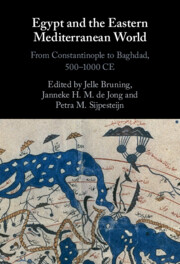Book contents
- Egypt and the Eastern Mediterranean World
- Egypt and the Eastern Mediterranean World
- Copyright page
- Contents
- Figures, Graphs, and Tables
- Notes on Contributors
- Notes on Transliteration, Names, and Dates
- Preface and Acknowledgments
- Additional material
- Introduction
- Part I Political and Administrative Connections
- Part II Economic Connections
- Part III Social and Cultural Connections
- Index
- References
Introduction
Published online by Cambridge University Press: 01 December 2022
- Egypt and the Eastern Mediterranean World
- Egypt and the Eastern Mediterranean World
- Copyright page
- Contents
- Figures, Graphs, and Tables
- Notes on Contributors
- Notes on Transliteration, Names, and Dates
- Preface and Acknowledgments
- Additional material
- Introduction
- Part I Political and Administrative Connections
- Part II Economic Connections
- Part III Social and Cultural Connections
- Index
- References
Summary
Herodotus’ (fifth century BCE) famous assertion that Egyptians are the “opposite to other men in almost all matters” (2.83) has set the tone for analyses of Egypt ever since. On the one hand, Egypt’s incomparably rich documentary record, preserved in the papyri and other material remains, has attracted extraordinary scholarly attention. On the other hand, Egypt’s unusual geography and the specialized kinds of agricultural and social organization has given rise to it being seen as non-representative. Moreover, a scholarly view that tends to look from the imperial center outward sees Egypt on the margins, leading to a characterization of its historical developments – not always explicitly acknowledged – as at once exceptional and peripheral.
- Type
- Chapter
- Information
- Egypt and the Eastern Mediterranean WorldFrom Constantinople to Baghdad, 500-1000 CE, pp. 1 - 16Publisher: Cambridge University PressPrint publication year: 2022



